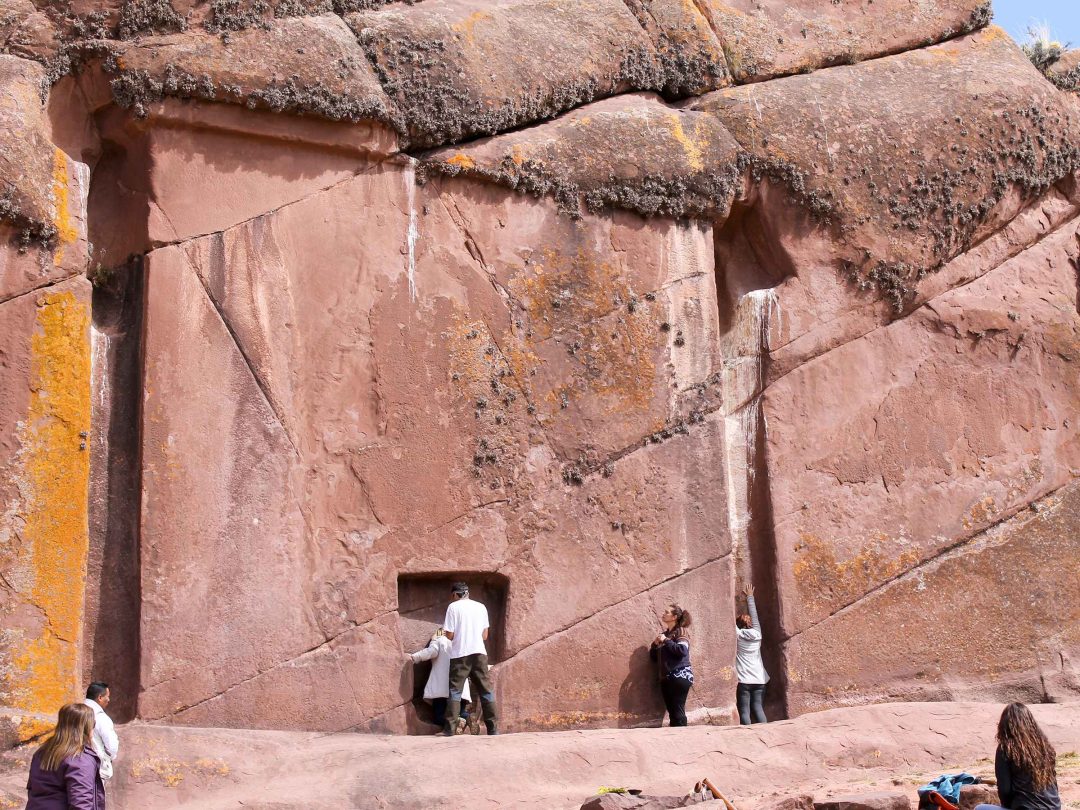Locals colloquially call Aramu Muru the ‘Gate of the Gods’ (Puerta de Hayu Marca), a mysterious stone structure nestled in the Hayu Marca Mountain near Lake Titicaca in southern Peru. Discovered in the early 1990s by local tour guide José Luis Delgado Mamani, this enigmatic site has captivated archaeologists, spiritualists, and tourists alike due to its unique design, unresolved origins, and association with interdimensional legends12. This article examines the historical context, architectural features, cultural significance, and prevailing theories surrounding Aramu Muru, synthesizing interdisciplinary perspectives to unravel its enduring mystery.

Historical and Cultural Context
Discovery and Location
Aramu Muru is situated approximately 35 kilometers southeast of Puno, Peru, near Lake Titicaca—a region steeped in indigenous Andean history. The site lies within the ancestral lands of the Aymara and Quechua peoples, whose traditions link the lake to cosmological creation myths. The structure’s proximity to Tiwanaku (a pre-Inca archaeological complex dating to 400 BCE) suggests potential cultural or ceremonial connections, though no definitive evidence ties it to any specific civilization.
Pre-Inca and Inca Associations
While some scholars attribute Aramu Muru to the Tiwanaku culture (200 BCE–1000 CE), others argue it predates even this civilization. Inca legends, however, dominate its folklore. According to oral traditions, an Inca priest named Aramu Muru fled Spanish conquistadors in the 16th century, carrying a sacred golden disk from the Temple of the Sun (Koricancha) in Cusco. He purportedly activated the gate with the disk, vanishing into another realm. This narrative, while unverified, underscores the site’s perceived spiritual potency and its symbolic role in resisting colonial oppression.
Architectural Description
The structure is carved into a natural red sandstone cliff, measuring 7 meters in height and width, with a central T-shaped niche approximately 2 meters tall28. The niche features a circular depression at its base, interpreted by some as a symbolic or functional element for rituals. Flanking the niche are vertical grooves and smaller tunnels, possibly decorative or ceremonial in purpose. The soft sandstone material suggests it could have been shaped using rudimentary tools, though its precision remains remarkable.
Legends and Spiritual Significance
Interdimensional Portal Hypothesis
Aramu Muru is often described as a “stargate” or interdimensional portal. Indigenous legends claim heroes and priests traversed the gate to commune with deities or achieve immortality. Modern spiritual seekers report anomalous experiences—visions, energy shifts, or sensations of “connection”—though scientific measurements have detected no unusual electromagnetic or geological activity.
Ritual Practices
The site remains a hub for shamanic rituals, meditation, and offerings (e.g., coca leaves, water) to honor ancestral spirits. Local shamans assert the gate opens only for the spiritually prepared, a belief perpetuated by esoteric groups who pilgrimage here.
Scientific and Archaeological Perspectives
Theories of Origin
- Ceremonial Function: The niche’s human-scale dimensions suggest ritual use, possibly for astronomical alignments or initiations.
- Abandoned Inca Project: Some archaeologists propose it was an unfinished Incan construction, though stylistic inconsistencies challenge this.
- Geological Formation: A minority argue natural erosion created the structure, enhanced later by human carving.
Challenges in Research
No organic materials have been found for radiocarbon dating, and the Peruvian government restricts excavations due to its protected status. This lack of empirical data fuels speculative theories, including extraterrestrial or advanced ancient technology hypotheses.
Unresolved Mysteries and Conclusion
Aramu Muru’s true purpose remains elusive, straddling the line between archaeological enigma and spiritual symbol. Its legends reflect broader Andean cosmovision, where natural landmarks are revered as sacred thresholds. While scientific scrutiny is hindered by limited research, the site’s cultural resonance endures, attracting both scholarly curiosity and metaphysical fascination. Future interdisciplinary studies—combining archaeology, geology, and ethnography—may yet decode this ancient mystery.
References
- Wikipedia. (2024). Aramu Muru.
- Peru VIP Travel. (2024). Exploring the Mystery of Aramu Muru.
- Megalithic Builders. (n.d.). Gate of the Gods.
- Colca Canyon Tours. (2022). The Mystical Interdimensional Portal of Aramu Muru.
- Années de Pèlerinage. (n.d.). Amaru Muru: The Spiritual Doorway of the Incas.
- Maxwell Journeys. (2023). The Enigmatic Amaru Muru Portal.
- Daily Mail. (2025). Mysterious ‘Gate of the Gods’.
- IFLScience. (n.d.). No One Knows What Peru’s Mysterious “Gate Of The Gods” Was For.
- Giardino Tours. (2021). The Interdimensional Gate Aramu Muru.

